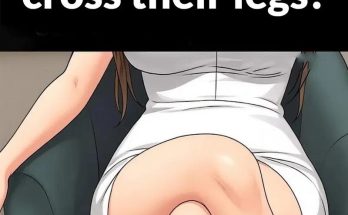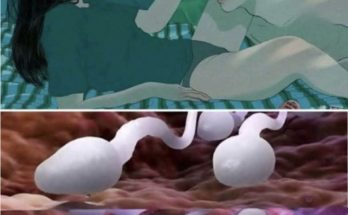🚨 BREAKING-NEWS🚨 The new pope has just been announced…Read More

🚨 BREAKING-NEWS🚨 The new pope has just been announced…Read More

🚨 BREAKING-NEWS🚨 The new pope has just been announced…Read More
This image depicts a close-up view of a hand, specifically focusing on fingers that are noticeably deformed and enlarged at the joints. The visual characteristics presented in the image strongly suggest a medical condition affecting the joints, possibly a form of advanced arthritis. Let’s explore a detailed breakdown:
Visual Description
- Fingers Involved: The image shows at least three fingers — most likely the index, middle, and ring fingers.
- Visible Changes:
- Prominent bony enlargements at the joints, particularly around the middle and end joints (proximal and distal interphalangeal joints).
- The skin over these joints appears stretched and shiny, suggesting underlying swelling.
- The fingernails appear relatively normal, although the joints underneath are deformed.
- The background is dark, which highlights the deformities more clearly.
Medical Interpretation: Possible Conditions
1. Osteoarthritis (OA)
- The image most closely resembles severe osteoarthritis of the hands.
- Osteoarthritis is a degenerative joint disease where the cartilage that cushions the ends of bones wears down over time.
- Common features:
- Heberden’s nodes: Bony swellings of the distal interphalangeal joints (near the fingertips).
- Bouchard’s nodes: Bony swellings of the proximal interphalangeal joints (middle of the fingers).
- The joints become enlarged, stiff, and painful, leading to reduced function.
2. Rheumatoid Arthritis (RA)
- RA is an autoimmune disease where the immune system attacks joint linings.
- However, rheumatoid arthritis usually results in softer swelling, redness, and joint deviation, rather than the hard bony growths seen here.
- Although RA can cause deformities, the hard nodules suggest osteoarthritis more strongly.
3. Gout
- Gout is a metabolic condition caused by the deposition of uric acid crystals in joints.
- It can lead to swollen, painful joints and the formation of tophi (urate crystal lumps).
- The swellings in gout are often softer and more irregular, and gout usually affects the big toe first.
Pathophysiology of the Likely Condition (Osteoarthritis)
- Wear and Tear: Over time, repetitive movements or stress on the joints can erode the cartilage.
- Bone Changes: As cartilage deteriorates, bones may rub together and stimulate the growth of bone spurs (osteophytes).
- Joint Space Narrowing: Seen on X-rays, this loss of cartilage reduces the space between bones.
- Pain and Stiffness: Damage to cartilage and inflammation of the joint lining (synovitis) contribute to discomfort.
Symptoms Likely Experienced by the Individual
- Pain: Especially after use, worsening throughout the day.
- Stiffness: Most noticeable after periods of inactivity.
- Swelling and Warmth: Around affected joints.
- Reduced Range of Motion: Difficulty in grasping or manipulating objects.
- Physical Deformity: As illustrated in the image.
Risk Factors for Such Conditions
- Age: Risk increases with age.
- Gender: Women are more likely to develop osteoarthritis, particularly after menopause.
- Genetics: Family history can contribute.
- Occupation: Jobs that stress certain joints.
- Obesity: Extra weight adds stress to joints, especially weight-bearing ones, but systemic inflammation also plays a role.
- Previous Joint Injury: Increases the likelihood of future osteoarthritis.
Possible Treatments and Management
1. Medical Management
- Pain Relief: NSAIDs (e.g., ibuprofen) to reduce inflammation and pain.
- Topical Agents: Creams containing capsaicin or NSAIDs.
- Corticosteroid Injections: For severe inflammation.
- Physical Therapy: To maintain joint function and strengthen surrounding muscles.
2. Lifestyle Changes
- Exercise: Gentle activities like swimming to maintain mobility without stressing joints.
- Weight Management: Reducing body weight can ease stress on joints.
- Assistive Devices: Using tools to aid in daily activities can reduce joint strain.
3. Surgical Intervention
- In severe cases, joint replacement surgery or joint fusion might be considered.
Emotional and Social Impacts
Living with such a visible deformity can have psychological and social consequences, including:
- Reduced self-esteem: Due to changes in appearance.
- Social withdrawal: Embarrassment or fear of stigma.
- Depression and Anxiety: Common in chronic pain conditions.
- Loss of Independence: Difficulty with tasks like writing, buttoning clothes, or opening jars.
Preventive Strategies
- Early Diagnosis and Treatment: Can slow progression.
- Protecting Joints: Using ergonomic tools, avoiding repetitive stress.
- Healthy Lifestyle: Balanced diet rich in anti-inflammatory foods.
Broader Health Connection
This visible joint damage can be a marker for broader systemic health, indicating:
- Increased risk for cardiovascular diseases (due to systemic inflammation).
- Potential association with metabolic syndrome (obesity, hypertension, diabetes).
Conclusion
The image is a stark and sobering visual of the impact chronic joint disease can have on the human body, most likely showing severe osteoarthritis. It reminds us of the importance of early detection, proactive management, and comprehensive support—medical, emotional, and social—to help individuals maintain quality of life even in the face of such challenging conditions.
Would you like me to also create a simple educational poster based on this explanation? It could be helpful for raising awareness!



